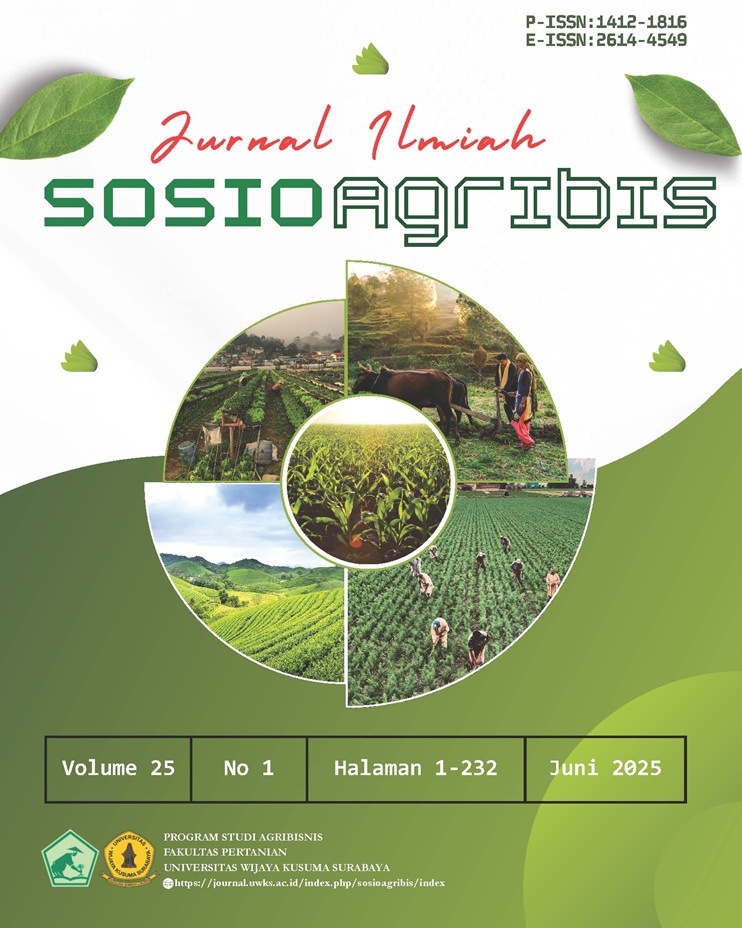Pengaruh Modal, Harga, Tenaga Kerja, Luas Lahan, Jumlah Produksi Terhadap Pendapatan Petani Gambir di Nagari Solok Bio-Bio (The Influence of Capital, Price, Labor, Land Area, Production Amount on the Income of Gambir Farmers in Nagari Solok Bio-Bio)
DOI:
https://doi.org/10.30742/jisa25120254388Abstract
Harau is one of the sub-districts in Lima Puluh Kota Regency that has significant potential as a center for gambir commodity production, with a total land area of 16,708 hectares and a production volume of 10,823.66 tons. The productivity of gambir agriculture in Harau District is the lowest, which is 0.12 ha/kg. One of the smallest administrative areas (Nagari) in Harau District that experienced a decline in productivity was Nagari Solok Bio-Bio. In this study, the influence of capital factors (X1), price (X2), labor (X3), land area (X4), and production volume (X5) was studied simultaneously and partially on the income of gambir farmers in Nagari Solok Bio-Bio. The methodology used was multiple linear regression analysis and a questionnaire with a Likert scale. Based on the results of the study, the average income of gambir farmers per year in Nagari Solok Bio-Bio was IDR 41,889,095. Based on the results of the study, all independent variables, namely capital, price, labor, land area, and production volume, have a significant influence on the income of gambir farmers, both partially and simultaneously. With an Adjusted R-squared (R²) Coefficient of 0.667, the five factors contributed 66.7% to the variation in farmer income.
Keywords: Gambir, Income, Multiple Linear Regression
Downloads
Additional Files
Published
Issue
Section
License
- The author retains copyright and grants the journal the right of first publication with the work being simultaneously licensed under the Creative Commons Attribution License which allows others to share the work with acknowledgment of the work's authorship and initial publication in this journal.
- Authors may make additional separate contractual arrangements for the non-exclusive distribution of the published journal version of the work (for example, posting it to an institutional repository or publishing it in a book), with acknowledgment of its initial publication in this journal.
- Authors are permitted and encouraged to post their work online (for example, in institutional repositories or on their websites) before and during the submission process, as it can result in a productive exchange, as well as earlier and larger citations of published work (See The Influence Open Access).

